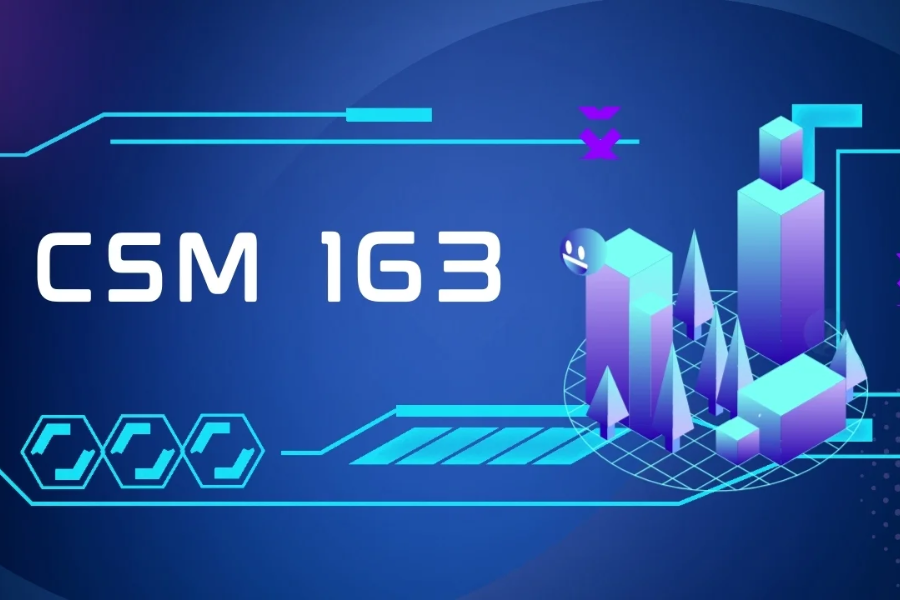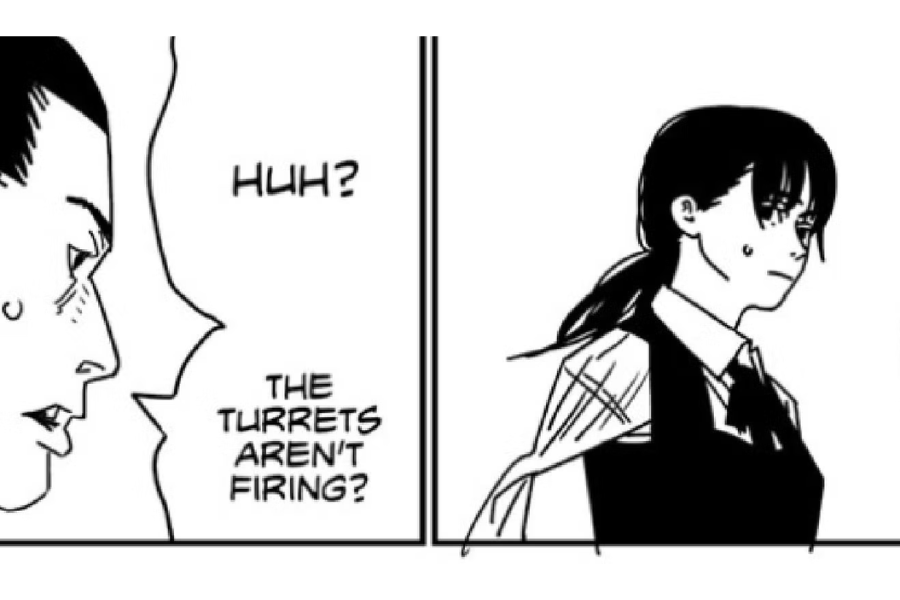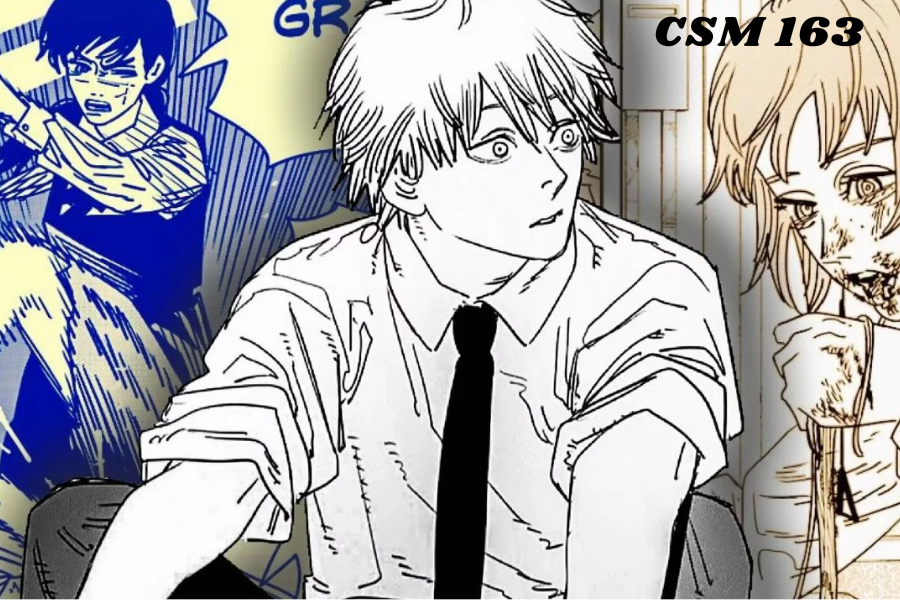The world of manga and anime is a vibrant tapestry woven with intricate stories and unforgettable characters, each offering fans a unique experience. Among these remarkable series, Chainsaw Man stands out, captivating audiences with its distinct blend of dark themes, adrenaline-pumping action, and deep emotional storytelling. This combination has sparked lively discussions across various fan communities, making it a beloved topic of conversation. As the series continues to evolve, fans are eagerly waiting to see what twists and turns lie ahead, especially in the latest chapter, CSM 163.
In this blog post, we’ll dive into the latest developments of Chainsaw Man, with a particular focus on CSM 163. This chapter features significant events and character dynamics that are sure to leave a lasting impact on the storyline.
Join us as we navigate the thrilling chaos of CSM 163, unraveling the layers of this complex narrative together. With every twist and turn, Chainsaw Man continues to showcase its brilliance, and there’s no better time to delve into its depths!
Chapter 163 Overview: The Wake-Up – Reality vs. Dream

| Character | Key Event/Struggle | Themes Explored | Impact |
|---|---|---|---|
| Haruka | Discovers his group’s escape hasn’t made headlines; media focuses on Koma Komagawa | Identity, significance of actions, public recognition | Questions his role and the importance of the Chainsaw Man Church |
| Asa | Struggles with her identity and diminished popularity after losing an arm | Identity crisis, fleeting nature of fame | Reflects personal battles arising from public disinterest |
| Denji | Faces physical pain and confrontation with Katana Man; realizes his situation is not a dream | The reality of ongoing battles, personal stakes | Grounds the narrative in reality, heightening stakes for him |
In chapter 163 of “Chainsaw Man,” the characters are thrust into a reality where their dreams and aspirations clash with harsh truths. Haruka feels disillusioned when his group’s escape goes unnoticed, overshadowed by the media’s focus on a celebrity figure. Asa battles her identity and the fallout from her injuries, highlighting the fleeting nature of fame and public attention. Denji, confronted by a past adversary, realizes the gravity of his situation, which anchors the narrative in a sobering reality. Together, these struggles reveal the complexities of personal identity and the challenges of navigating a world that often overlooks individual sacrifices.
The Emergence Of The Chainsaw Man Church: A New Threat
In chapter 163, we witness a significant turning point with the introduction of Koma Komagawa, a new antagonist, alongside the emergence of the Chainsaw Man Church. This organization catalyzes a wave of chaos as millions are transformed into Devils, posing a severe threat to society. Koma’s dual role as a charismatic idol and reporter adds depth to her character, as she skillfully uses her media influence to promote the Church’s agenda and manipulate public perception.
The rise of Devils, driven by the Church’s activities, has profound implications for both individuals and society. Each transformation into a Devil signifies a loss of humanity and the overwhelming impact of external forces on personal identity. This alarming phenomenon forces the characters to reevaluate their understanding of reality and their roles within it. As the Chainsaw Man Church gains power, it raises critical questions about free will, control, and the very nature of evil itself, challenging the characters to confront the moral complexities of their world.
Internal Conflicts: Group Dynamics And Personal Struggles

Chapter 163 delves deeply into the dynamics within the group as they confront their precarious situation. Each member grapples with personal struggles that shape their reactions and decisions, highlighting the complexity of their interactions. For Haruka, realizing their insignificance is a crushing blow to his confidence, leading him to reassess his goals and the impact he wishes to have. Meanwhile, Asa’s ongoing identity crisis influences her relationships, driving her to seek validation and a sense of purpose amidst the chaos surrounding them.
Denji’s physical and emotional turmoil further intensifies the group’s dynamics. His confrontation with Katana Man reminds him of his ongoing battles, while Yoru’s dismissive attitude toward his human form reveals the fractures in their alliances and the shifting loyalties among the group. Yoru’s pragmatic approach emphasizes strength over sentimentality, creating tension as she navigates the complexities of their situation.
Adding to the internal conflict, Nobana’s growing unease complicates the group’s cohesion. Her fears for their safety clash with Haruka’s desire for solidarity and collaboration, igniting debates about the best course of action. These internal struggles not only underscore the theme of survival but also reflect the group’s attempts to navigate a world on the brink of chaos, illustrating how personal challenges can shape collective decisions in dire circumstances.
Safety Or Solidarity? A Turning Point
Your analysis captures the intense moral and emotional tension in “Chainsaw Man,” where the struggle between solidarity and self-preservation plays a crucial role. Haruka’s commitment to unity suggests a belief in the power of collective resilience, while Nobana’s concerns reflect a growing sense of vulnerability, as the dangers they face intensify. This divide reveals how deeply each character’s fears and loyalties shape their decisions and impact the group’s survival.
This central dilemma emphasizes a core theme of the series: the weight of every choice and its cascading consequences. In “Chainsaw Man,” decisions aren’t simple or without cost. Instead, they require compromise, revealing the personal stakes each character faces. By highlighting these conflicting perspectives, the story explores the broader human experience of balancing individual desires with collective responsibilities—a balance that shapes each character’s journey and transformation.
Final Words
In CSM 163 of Chainsaw Man, the group faces a pivotal decision, torn between safety and solidarity in the face of growing dangers. Haruka argues for staying together, believing that unity will increase their chances of survival, while Nobana’s anxiety about the threats surrounding them makes her lean toward caution, fearing that their vulnerabilities might outweigh the benefits of sticking together. This conflict highlights a core theme of the series: the consequences of each choice and the ongoing balancing act between personal desires and the collective good. Each character’s stance reflects their unique fears and values, adding depth to the psychological stakes of the story as they navigate these life-altering decisions in CSM 163.
This chapter exemplifies the series’ focus on moral complexity, where choices carry profound consequences and often require compromise. CSM 163 mirrors the ongoing struggles in Chainsaw Man to reconcile individual interests with the risks of loyalty and survival. This intense dilemma not only drives the narrative forward but also shapes each character’s journey, emphasizing the series’ exploration of sacrifice, resilience, and the impact of choices on identity and relationships.
FAQs For CSM 163
- What is the main conflict in Chapter 163?
The central conflict revolves around a group decision between sticking together for safety or splitting up to reduce their vulnerability. Haruka advocates for unity, believing that they gain strength through solidarity, while Nobana worries that staying together makes them easier targets and puts everyone at greater risk. - What themes are explored in Chapter 163?
The chapter delves into themes of choice, consequence, loyalty, and survival. It highlights the moral complexity of decisions that have significant, often irreversible effects. Characters are forced to weigh their fears and desires against the well-being of the group, making each decision impactful. - How does this conflict reflect the broader themes of “Chainsaw Man”?
“Chainsaw Man” frequently explores the cost of loyalty, the risks inherent in survival, and the weight of individual decisions. Chapter 163 reinforces these themes by showing how each choice affects both the characters and the group, emphasizing the impact of every action in a dangerous world where nothing is simple. - How do Haruka and Nobana’s perspectives differ in this chapter?
Haruka believes that unity will make them stronger and better equipped to handle threats. In contrast, Nobana feels that the risks they face are too great and fears that being together only increases their vulnerability. Their differing viewpoints underline the tension between trust and caution within the group. - How does this chapter develop the characters’ journeys?
Each character’s stance on the decision reflects their fears, values, and growth. As they navigate these difficult choices, their personalities and motivations are revealed more deeply. This decision-making process not only drives the plot but also adds layers to each character, shaping their journeys and relationships with one another.
Stay in touch for more updates and alerts visit: Buzz Slash!




